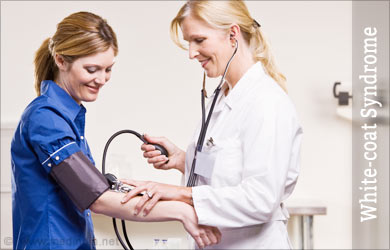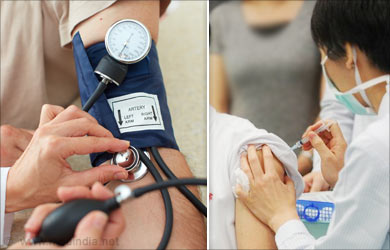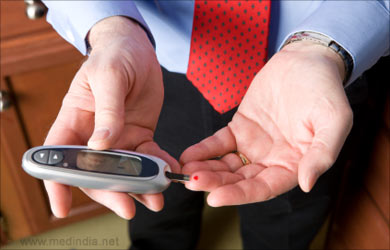- Properly defining white coat hypertension - (http://eurheartj.oxfordjournals.org/content/23/2/106.full.pdf)
- White coat hypertension: When blood pressure rises at the doctor's office - (http://www.mayoclinic.org/diseases-conditions/high-blood-pressure/expert-answers/white-coat-hypertension/faq-20057792)
- Alwan H et al. Epidemiology of masked and white-coat hypertension: the family-based SKIPOGH study. PLoS One. 2014;9(3):e92522.
- Owens P et al. Diagnosis of white-coat hypertension by ambulatory blood pressure monitoring. Hypertension. 1999;34(2):267-272.
- Grossman E. Ambulatory blood pressure monitoring in the diagnosis and management of hypertension. Diabetes Care. 2013;36(2):S307-S311.
- Boggia J. White-coat hypertension on automated blood pressure measurement: Implications for clinical practice. Eur J Card Med. 2011;I(IV):17-21.
- Mallion JM. Clinical significance and treatment requirements in white coat and masked hypertension. Special Issues in Hypertension. 2012;13-24. DOI:10.1007/978-88-470-2601-8_2.
- Chrysant SG. Treatment of white coat hypertension. Curr Hypertens Rep. 200;2(4):412-417.
About
It is common for individuals to cringe at the thought of visiting a doctor. Many of us attempt to delay the doctor’s visit for a number of reasons. To some, the financial expense is a deterrent, while for others, it is an unexplained fear of the doctor. The latter emotion leads to a temporary increase in blood pressure at the doctor’s office. This effect has been analyzed and categorized as white-coat hypertension or white-coat syndrome, and is observed in individuals with normal blood pressure. Another term for this condition is isolated office hypertension. The name is based on the fact that healthcare professionals in white coats tend to measure the blood pressure of individuals. This condition was first noticed in 1897 by Riva-Rocci. There is a difference in the terms, white-coat syndrome and white-coat effect. White-coat syndrome is the increase in blood pressure at the doctor’s office. White-coat effect, on the other hand, indicates the changes in blood pressure that occur before the visit to the clinic, during the visit at the clinic, and following the visit to the doctor. It is observed in patients that have been diagnosed with hypertension.

In 1983, Mancia et al quantified the changes in blood pressure in individuals, prior to, during, and immediately following the visit to the doctor. The research findings indicated that the white-coat syndrome was a relevant condition observed in most patients of all age groups and genders, from children to older people. The frequency of incidence is approximately 20% in the population that has hypertension. White-coat syndrome has been commonly observed in women compared with men. White-coat syndrome has been observed in pregnant women and the frequency of incidence ranges from 3% to 60%.
The vast range is based on the results obtained from 3 different clinical studies. It is observed that the white-coat hypertension in pregnant women is a mild, benign symptom and does not generate complications such as preeclampsia in women. Women may be prone to have a cesarean section during delivery based on the high blood pressure reading obtained at the time. A review article by Verdecchia et al states that an individual may be diagnosed with white-coat syndrome, if the blood pressure is equal to or above 140/90 mmHg during the clinical visit, while the regular blood pressure remains below 135/85 mmHg at all times.
Causes of White-coat Syndrome
Nearly 20% of the population that has hypertension is gripped with the white-coat syndrome. The most common cause of white-coat hypertension is the fear that gets lodged in an individual. Most individuals are tormented by the fear of hearing a poor prognosis of their health condition or a bad diagnosis of their symptoms. Today, the internet makes matters worse by providing infinite resources of information on different disease conditions. However, with the lack of appropriate medical knowledge or the guidance of a trained medical professional, individuals tend to get misled by negative advice or comments on the disease in question. Psychologists attribute this fear of doctors to the general association of hospitals with illness, injury, and death.

A second cause of white-coat syndrome is the fear of needles. Needle phobia is a recognized condition by the American Psychiatric Association and is listed under the phobia for blood, injection, and injury. Individuals who experience needle phobia start to experience anxiety, fainting, and panic attacks at the sight of a needle. Nearly 10% of the population have needle phobia. In a recent study in Switzerland, the white-coat syndrome was significantly associated with age. Other factors such as family history or physical activity, however, were not significant factors of white-coat syndrome.
Symptoms of White-coat Syndrome
The one major symptom of the white-coat syndrome is an elevated blood pressure in the vicinity of a clinic, a needle, or a doctor.
The individuals with white-coat syndrome are also more susceptible to the following conditions:
- Abnormalities in blood glucose levels.
- Gain in weight
- Dyslipidemia - Elevated levels of lipids in the blood.
- Greater risk of diabetes






